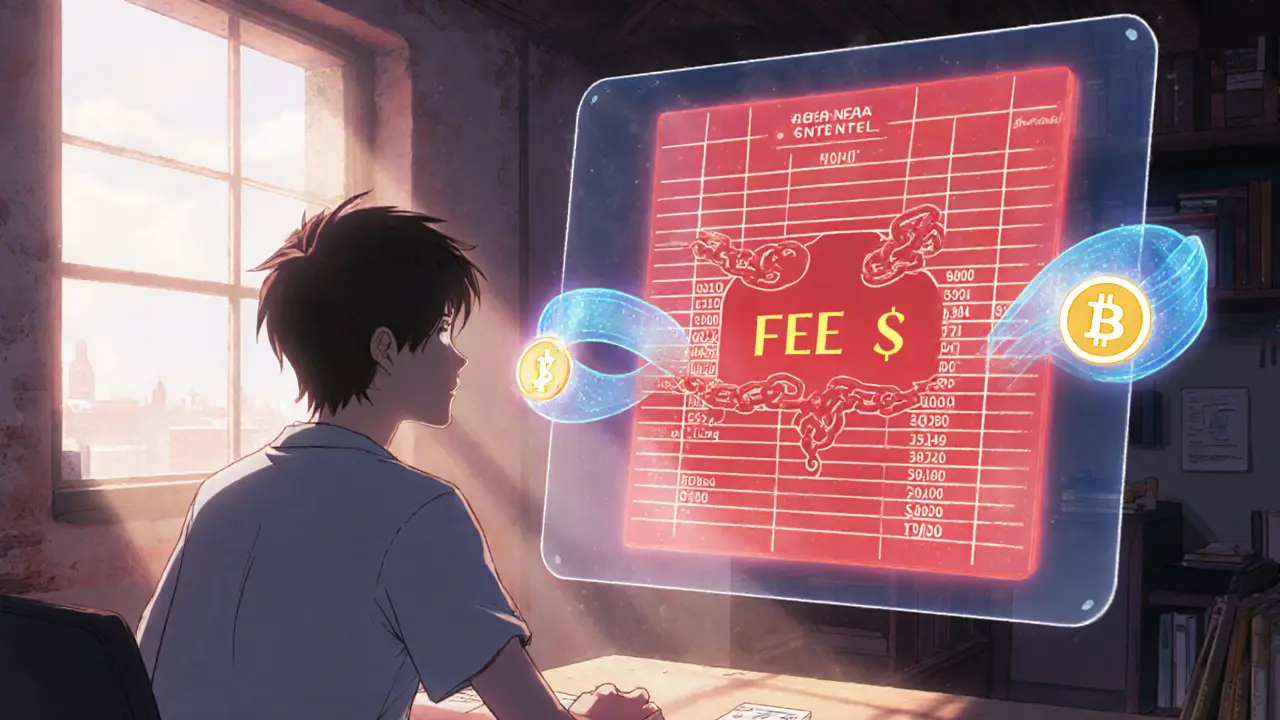Lightning Network Fee Calculator
Calculate the cost difference between Lightning Network and on-chain Bitcoin transactions. Based on current network conditions.
Lightning Network
Typical fees: 0.000001 BTC (~$0.0005)
Estimated Fee:
On-Chain Bitcoin
Typical fees: 0.0001-0.001 BTC (~$0.50-$5)
Estimated Fee:
Fee Difference:
Want to send Bitcoin faster than a coffee order? The Lightning Network promises exactly that-near‑instant, low‑fee payments without sacrificing Bitcoin’s security. This guide walks you through what the network is, how it works, real‑world uses, and the steps you need to start paying (or getting paid) in seconds.
What the Lightning Network Actually Is
Lightning Network is a layer‑2 payment protocol built on top of the Bitcoin blockchain. It was first proposed in 2016 by Joseph Poon and Thaddeus Dryja to solve Bitcoin’s slow confirmation times and high on‑chain fees. After the SegWit upgrade in August 2017, the network launched on mainnet and has been scaling ever since.
How It Works: Payment Channels and Multi‑Signature Addresses
The core building block is a payment channel a two‑way ledger between two parties that lives off the main blockchain. To open a channel, both participants create a multi‑signature address a Bitcoin address that requires signatures from both parties before any funds can move. The initial funding transaction is recorded on‑chain, but every subsequent micro‑transfer simply updates the off‑chain balance sheet.
When the channel closes, a single on‑chain transaction settles the final balances, dramatically reducing the number of blockchain writes. This design gives you millisecond‑to‑second settlement compared with Bitcoin’s ~10‑minute block time.
Why It Beats Traditional On‑Chain Transactions
Three practical benefits stand out:
- Speed: Payments validate in milliseconds to a few seconds, making it suitable for point‑of‑sale or real‑time gaming.
- Fees: Typical fees are fractions of a cent-orders of magnitude lower than the $10‑$50 spikes seen during Bitcoin congestion peaks.
- Privacy: Individual Lightning payments never hit the public blockchain, limiting traceability.
Below is a quick side‑by‑side comparison.
| Metric | Lightning Network | On‑Chain Bitcoin |
|---|---|---|
| Settlement time | Milliseconds‑seconds | ~10 minutes (average) |
| Typical fee | ≈0.000001BTC (≈$0.0005) | 0.0001‑0.001BTC (≈$0.50‑$5) |
| On‑chain footprint | Only channel open/close | Every transaction recorded |
| Privacy level | Off‑chain, limited traceability | Fully public ledger |

Getting Started: Wallets, Nodes, and Liquidity
There are two main paths: use a custodial wallet that abstracts the technical details, or run your own node for full control.
- Custodial wallets - Strike, Blue Wallet, Wallet of Satoshi. They manage private keys for you, so you can start paying in minutes.
- Non‑custodial wallets - Muun, Breez, Phoenix, Zap. These give you full control of funds but require you to keep the app online.
- Full nodes - RaspiBlitz, Umbrel, MyNode. Ideal for developers or businesses that need to route payments and earn fees.
The workflow is simple:
- Fund an on‑chain Bitcoin address (use an exchange or fiat on‑ramp like Simplex).
- Open a payment channel by selecting capacity (e.g., 0.01BTC) and broadcasting the on‑chain funding transaction.
- Make Lightning payments instantly through the open channel.
- When you’re done, close the channel to settle the final balance on‑chain.
Liquidity is the only sticking point: a channel must have enough outbound capacity to route payments. Services like Voltage a long‑running Lightning infrastructure provider offering API solutions for businesses let you tap into existing liquidity pools without running your own node.
Real‑World Use Cases
From coffee shops to cross‑border remittances, the Lightning Network is finding niches where speed and low cost matter most.
- Micropayments for content - Pay‑per‑article, API calls, or streaming tips as low as 1,000 satoshis (≈$0.50).
- Point‑of‑sale - Retailers in El Salvador already accept Lightning‑powered QR codes, clearing in seconds.
- International remittance - Send money across borders with near‑zero fees, bypassing traditional SWIFT delays.
- Machine‑to‑machine payments - IoT devices can settle usage fees instantly without a middleman.
- Business payouts - Companies like Strike use Lightning to pay freelancers and suppliers instantly.
Limitations and Common Pitfalls
Lightning isn’t magic; it comes with trade‑offs you should know before diving in.
- Online requirement - Channels only work while your node or wallet stays connected.
- Liquidity management - Insufficient outbound capacity leads to payment failures; rebalancing may be needed.
- Complexity for beginners - Setting up a full node can take weeks of learning.
- Centralization concerns - Large routing nodes could dominate traffic, though the protocol’s permissionless design mitigates this risk.

Future Roadmap: Taproot, Trampoline Routing, and Splicing
Development isn’t standing still. Recent upgrades include:
- Taproot channel updates - Improves privacy and reduces transaction size.
- Trampoline routing - Lets smaller nodes rely on big hubs for multi‑hop paths, simplifying payments.
- Splicing - Allows channel capacity to be increased or decreased without closing the channel.
Analysts at Fidelity predict wider mobile‑wallet integration and more enterprise APIs in the next year, pushing Lightning closer to mainstream adoption.
Key Takeaways
- Lightning turns Bitcoin into a practical medium of exchange by moving transactions off‑chain.
- Speed is measured in milliseconds, fees are near‑zero, and privacy is higher than on‑chain.
- Start small with a custodial wallet, or go pro with a self‑hosted node if you need routing fees.
- Watch for liquidity issues and keep your node online for the best experience.
- Future upgrades like Taproot and splicing will make the network even more efficient.
Frequently Asked Questions
Do I need Bitcoin on the Lightning Network to receive payments?
Yes. To accept Lightning payments you must have an open channel funded with BTC. Custodial services can create this for you automatically.
Can I move Lightning funds back to the main Bitcoin blockchain?
Absolutely. Closing a channel settles the final balance on‑chain, returning the BTC to a regular address.
What is the typical fee for a Lightning transaction?
Fees are usually a few hundred to a few thousand satoshis-a fraction of a cent-depending on network congestion and routing path.
Is the Lightning Network secure?
Security relies on Bitcoin’s underlying consensus. Channels are protected by two‑of‑two multi‑signature contracts, and any participant can unilaterally close a channel to reclaim funds.
How do I choose between a custodial and a non‑custodial wallet?
If you want simplicity and quick onboarding, pick a custodial wallet. If you value full control of private keys and are comfortable managing liquidity, go non‑custodial.







Isabelle Graf
July 12, 2025 AT 00:23 AMLightning just feeds the myth that Bitcoin can be a daily cash system, but it pushes us toward a few big players.
Millsaps Crista
August 15, 2025 AT 18:00 PMIf you want instant Bitcoin, drop the overthinking, grab a custodial Lightning wallet like Strike, fund it, and start paying-no more excuses.
Matthew Homewood
September 19, 2025 AT 11:36 AMThink of the Lightning Network as a philosophical shift from trust in institutions to trust in code.
It abstracts the friction of on‑chain settlement into a conversational contract between two parties.
This mirrors how societies moved from barter to money, seeking speed without sacrificing security.
While the tech is young, its conceptual roots are deep, echoing centuries of payment evolution.
So, whether you’re a skeptic or an early adopter, the underlying idea is worth contemplation.
Kyla MacLaren
October 12, 2025 AT 15:26 PMI guess the Lightning thing is cool but u gotta keep the node online 24/7 otherwise it’s kinda useless.
John Beaver
November 4, 2025 AT 19:16 PMWhen you open a Lightning channel, you are essentially locking up a piece of on‑chain Bitcoin into a two‑party contract.
Both sides must sign every update, which guarantees that funds cannot be stolen without cooperation.
The channel state is updated off‑chain, meaning no one else sees the intermediate balances.
Because only the opening and closing transactions hit the blockchain, you save a huge amount of block space.
This reduction in on‑chain writes translates directly into lower fees for every micro‑payment you make.
In practice, a well‑funded channel can process thousands of transactions per second, limited mainly by the node’s hardware.
Liquidity, however, remains the bottleneck; without enough outbound capacity, your payments will simply fail.
Rebalancing tools like Loop or peer‑to‑peer swaps let you move funds around without closing the channel.
Furthermore, the recent Taproot upgrade shrinks transaction sizes and hides the fact that you are using Lightning altogether.
Trampoline routing, introduced last year, allows small nodes to delegate path‑finding to larger hubs, simplifying the user experience.
Splicing is another upcoming feature that will let you adjust channel capacity on the fly, avoiding costly closures.
From a security standpoint, if a counter‑party tries to cheat, you can broadcast the latest state and retrieve your funds.
This punitive mechanism is enforced by Bitcoin’s underlying consensus, giving you confidence that the funds are safe.
Nevertheless, you must keep your node online; a dead node loses the ability to send or receive payments until it reconnects.
For casual users, custodial solutions abstract all this complexity, but they reintroduce custodial risk.
In short, Lightning offers a powerful scalability layer, but it demands careful liquidity management and reliable uptime.
EDMOND FAILL
November 16, 2025 AT 09:20 AMWatching the network grow feels like seeing a new highway being built in real time, every new channel adding another lane for traffic.